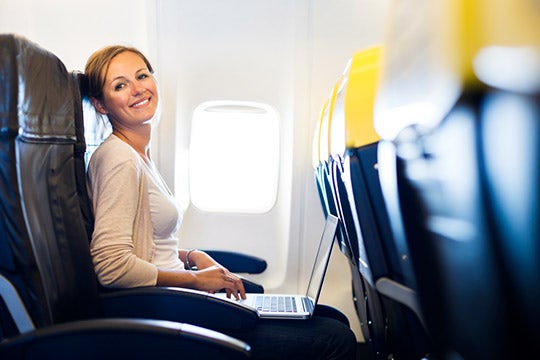
Unless you’ve heard an earful of complaints or undying praise from your business travelers, it may be tough to gauge how they really feel about their business trips. Carlson Wagonlit Travel answers that question with a massive survey of 10,000 business folks who travel on a regular basis.
What the Study Measured
The overall goal of the survey was to gauge the ROI from a traveler's point of view, and the first task was to establish the purpose of the trip.
- 31 percent: Meeting with potential or existing clients
- 21 percent: Team-related meetings
- 13 percent: Development and training
The next steps were to collect feedback on travelers regarding the usefulness of their most recent trip and, if the trips weren’t useful, find out what went wrong.
- 88 percent: Trips judged useful, with a rating of 4 or 5 (5 being the highest rating)
Factors that Resulted in Failure
Trips were considered failures if travelers rated them with a low 1 or 2 or even an average 3. The survey did a breakdown of variables that contributed to a trip being deemed a failure.
Number of Meetings
- 19 percent failure rate: One meeting scheduled
- 29 percent failure rate: Meetings lasting one hour or less
The more meetings scheduled, the higher the success rate of the trip. In general, every additional meeting planned during the trip decreases the probability of failure by 10 percent. The length of the meetings also mattered, with longer meetings typically resulting in higher success rates.
Length of Stay and Advance Booking
- 16 percent failure rate: Same-day trip
- 10 percent failure rate: Trips lasting five or more days
The length of stay impacts the success of a trip for two reasons. Longer trips allow for more meetings, thus increasing the chances of success. Longer trips also tend to be booked earlier, giving travelers more time to prepare and plan, again increasing the odds of success. Overall, the longer the trip and the earlier it’s booked, the higher the probability of success.
Trip Type
- 14 percent failure rate: Domestic travel
- 12 percent failure rate: Continental travel
- 9 percent failure rate: Intercontinental travel
Continental and intercontinental trips enjoy lower failure rates since both are typically longer and booked earlier than their domestic counterparts.
Job Level
- 15 to 16 percent failure rate: Administrative or associate levels
- 7 to 11 percent failure rate: Manager and director levels
- 11 percent failure rate: Corporate executives
Higher failure rates hit the execs due to their harried travel schedules, which often results in late bookings and less time to prepare for meetings.
Other factors that didn’t play a role in failure rates included gender, traveling alone or with colleagues, how frequently travelers visit the destination and the traveler’s geographic region.
Give your company travelers an edge on success with Chrome River’s travel expense reporting software.
Search
Subscribe
Latest Posts
- The Future of Finance: 5 Predictions For Digital Transformation in 2022 And Beyond
- Worried About Business Fraud? Use This B2B Pandemic Payment Fraud Checklist
- 5 Reasons Why Finance & Procurement Work Better Together
- Measure What You Manage: How to Make The Case for AP Automation With ROI To Your CEO
- A Brave New World: 3 Ways for Finance Teams to Navigate the Post- Pandemic Landscape
Posts by Category
Our choice of Chrome River EXPENSE was made in part due to the very user-friendly interface, easy configurability, and the clear commitment to impactful customer service – all aspects in which Chrome River was the clear winner. While Chrome River is not as large as some of the other vendors we considered, we found that to be a benefit and our due diligence showed that it could support us as well as any large players in the space, along with a personalized level of customer care.
We are excited to be able to enforce much more stringent compliance to our expense guidelines and significantly enhance our expense reporting and analytics. By automating these processes, we will be able to free up AP time formerly spent on manual administrative tasks, and enhance the role by being much more strategic.